Introduction
Object-Oriented Programming (OOP) is a programming paradigm that is based on the concept of “objects.” In OOP, you design and model your software by creating objects, which are instances of classes, and defining relationships and behaviors between these objects. OOP promotes the organization and structuring of code in a way that makes it easier to understand, maintain, and scale.
What is OOPS?
Object-Oriented Programming (OOP) is a programming paradigm that uses objects and classes to design and structure code. It revolves around four main principles: encapsulation, inheritance, abstraction, and polymorphism. These principles help in creating modular and reusable code, improving code maintainability, and reducing code complexity.
Top Features of OOPS
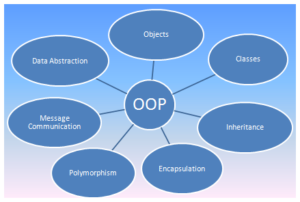
1.Inheritance
- Inheritance is a fundamental feature of OOP that allows a class (subclass or derived class) to inherit properties and behaviors (fields and methods) from another class (superclass or base class). This promotes code reuse and establishes a hierarchy of classes.
- For example, you can create a base class called “Vehicle” with common attributes like “color” and “speed,” and then derive subclasses like “Car” and “Motorcycle” that inherit these attributes.
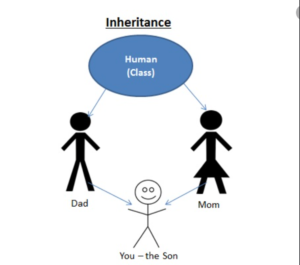
2.Encapsulation
- Encapsulation is the concept of bundling data (attributes or fields) and methods (functions) that operate on that data into a single unit called a class. It also involves restricting direct access to some of an object’s components.
- Encapsulation helps in data hiding and protecting the internal state of an object, allowing controlled access through methods (getters and setters).
- For example, you can encapsulate the “age” attribute of a “Person” class and provide methods like “getAge” and “setAge” to control access to it.
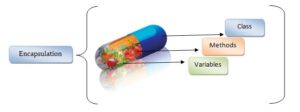
3.Abstraction
- Abstraction is the process of simplifying complex reality by modeling classes based on the essential properties and behaviors while ignoring non-essential details.
- It allows you to focus on what an object does rather than how it does it.
- For example, when modeling a “BankAccount” class, you abstract away the details of the banking system and focus on its core functionalities like “deposit,” “withdraw,” and “getBalance.”
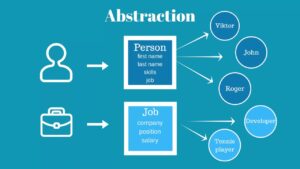
4.Polymorphism
- Polymorphism allows objects of different classes to be treated as objects of a common superclass. It enables you to perform operations on objects without knowing their specific types.
- Polymorphism can be achieved through method overriding and method overloading.
- For example, you can have a common interface “Shape” that various shapes like “Circle” and “Rectangle” implement. Then, you can iterate through a list of shapes and call a common “calculateArea” method on each of them, without knowing the specific shape.
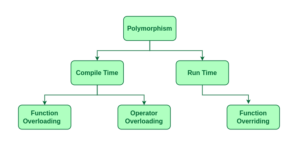
5.Method Overriding
- Method overriding is a form of polymorphism where a subclass provides a specific implementation of a method that is already defined in its superclass.
- This allows a subclass to customize or extend the behavior of a method inherited from the superclass.
- For example, you can override the “toString” method in a subclass to provide a customized string representation of an object.
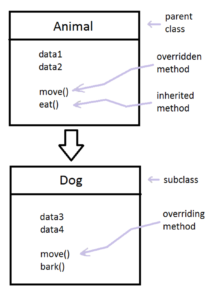
6.Method Overloading
- Method overloading is the ability to define multiple methods in a class with the same name but different parameter lists (different signatures).
- It allows you to provide multiple ways of using a method within the same class.
- For example, you can define different constructors in a class, each accepting different sets of parameters.
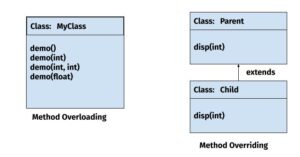
7.Objects
- In OOP, everything is treated as an object, which is an instance of a class. Objects have both data (attributes) and behaviors (methods).
- Objects are created from classes and can interact with each other through method calls and data sharing.
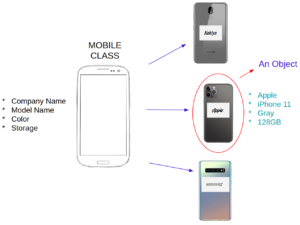
8.Classes
- Classes are the blueprint or template for creating objects. They define the structure (attributes and methods) that objects of the class will have.
- Classes encapsulate the state and behavior of objects.
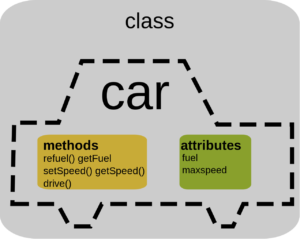
9.Constructors and Destructors
Constructors are special methods within a class that are called when an object of that class is created. They initialize the object’s state.
Destructors (in some programming languages) are methods called when an object is destroyed or goes out of scope, typically used for cleanup operations.
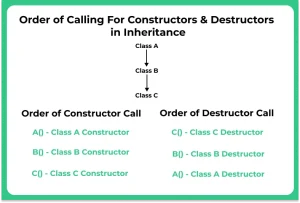
Conclusion
Object-Oriented Programming (OOP) provides a powerful way to design and structure software systems. It encourages code reuse, modularity, and maintainability by promoting the use of classes, objects, inheritance, encapsulation, abstraction, polymorphism, and more. Understanding and applying OOP principles can lead to more organized, understandable, and extensible code.
FAQs
1.Which are the best features of OOPs, and why explain?
-
Encapsulation
Advantage
Encapsulation is the bundling of data (attributes) and methods (functions) that operate on that data into a single unit called a class. It restricts direct access to an object’s components and provides controlled access through methods (getters and setters).
-
Inheritance
Advantage
Inheritance allows a class (subclass or derived class) to inherit properties and behaviors (fields and methods) from another class (superclass or base class). It promotes code reuse and establishes a hierarchy of classes.
-
Polymorphism
Advantage
Polymorphism allows objects of different classes to be treated as objects of a common superclass. It enables you to perform operations on objects without knowing their specific types.
-
Abstraction
Advantage
Abstraction involves simplifying complex reality by modeling classes based on essential properties and behaviors while ignoring non-essential details.
-
Classes and Objects
Advantage
OOP treats everything as an object, which is an instance of a class. Classes are blueprints for creating objects and define the structure (attributes and methods) that objects of the class will have.
2.What is an object in OOPs?
-
Instance of a Class
Objects are created based on a class, which serves as a blueprint or template for defining the structure and behavior of objects. The class defines the attributes (data) and methods (functions) that the objects of that class will have.
-
Attributes (Properties)
Objects have attributes that represent their state or characteristics. These attributes are defined by the class and can hold data values. For example, in a “Car” class, attributes might include “color,” “make,” and “model.”
-
Methods (Behaviors)
Objects have methods that define their behavior or actions. These methods are also defined by the class and allow objects to perform specific tasks or operations. For example, a “Car” class might have methods like “startEngine” and “stopEngine.”
-
Encapsulation
Objects encapsulate both data and methods into a single unit, making it possible to group related functionality together. Encapsulation also restricts direct access to an object’s internal data, promoting data hiding and controlled access through methods.
-
State
Objects have a state, which is defined by the values of their attributes at a given point in time. The state of an object can change as its attributes are modified through method calls or other operations.
-
Identity
Each object has a unique identity, allowing it to be distinguished from other objects of the same class. This identity is typically represented by a memory address or a reference.
-
Instantiation
To use an object in a program, you need to create an instance of the class it belongs to. This process is called instantiation, and it involves allocating memory for the object and initializing its attributes.
3.What are the basic principles of OOPs?
-
Encapsulation
Definition
Encapsulation is the bundling of data (attributes) and methods (functions) that operate on that data into a single unit called a class. It involves restricting direct access to some of an object’s components and providing controlled access through methods (getters and setters).
-
Inheritance
Definition
Inheritance allows a class (subclass or derived class) to inherit properties and behaviors (fields and methods) from another class (superclass or base class). It promotes code reuse and establishes a hierarchy of classes.
- Polymorphism
Definition
Polymorphism allows objects of different classes to be treated as objects of a common superclass. It enables you to perform operations on objects without knowing their specific types.
-
Abstraction
Definition
Abstraction is the process of simplifying complex reality by modeling classes based on essential properties and behaviors while ignoring non-essential details.

